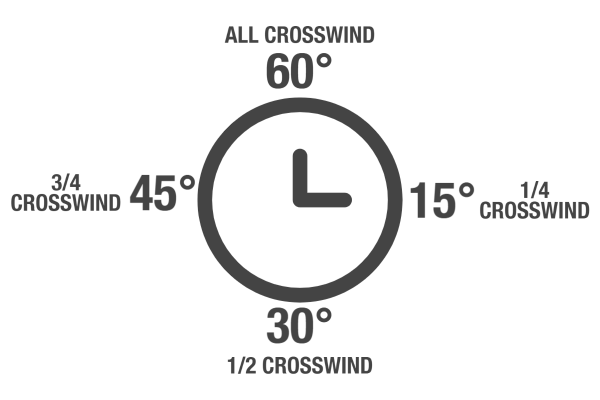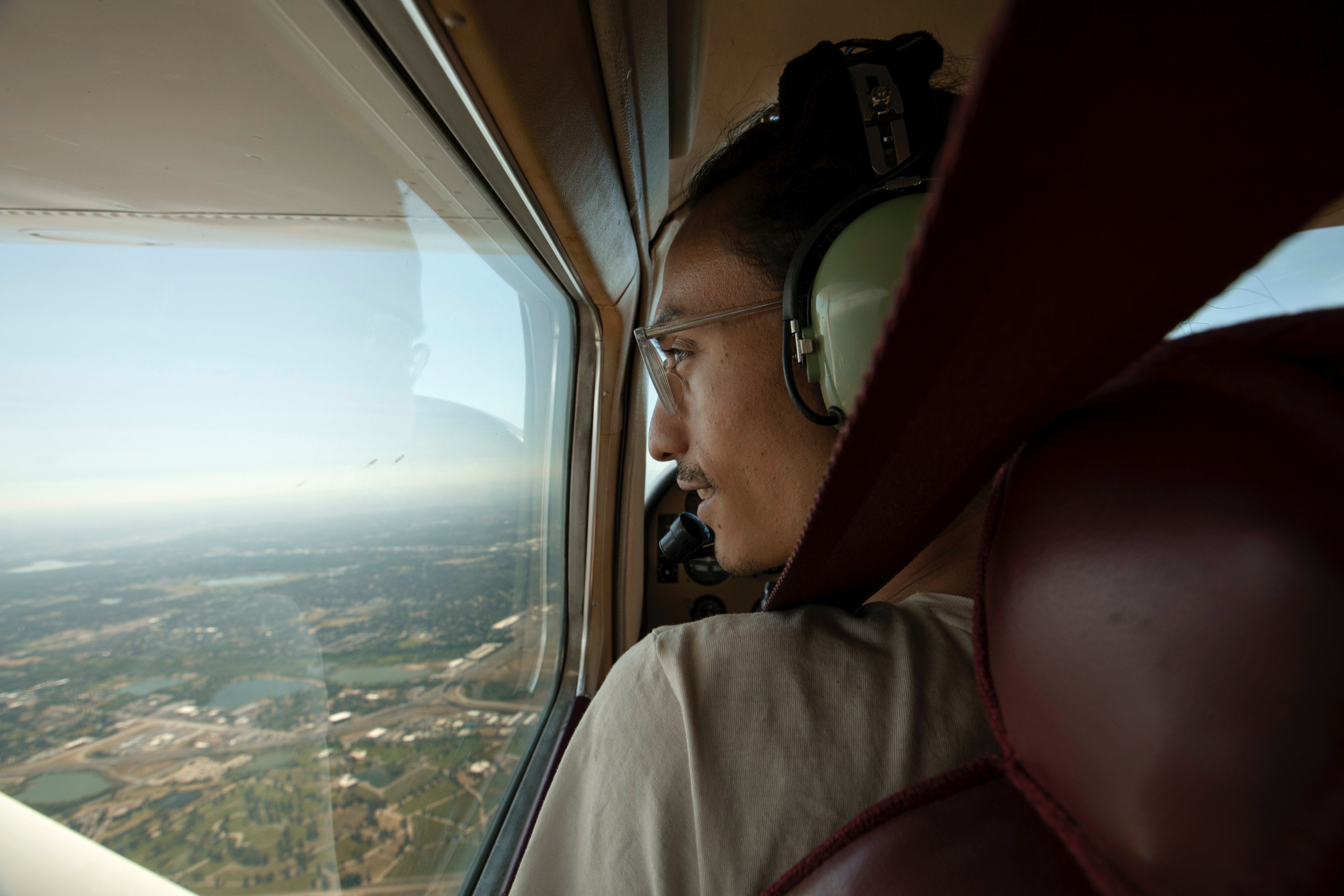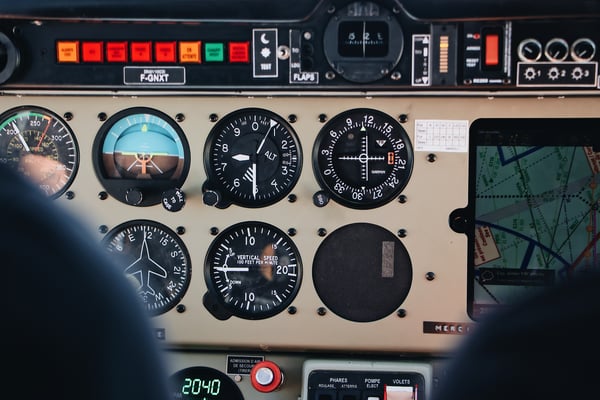The Ultimate Crosswind Calculator Cheat Sheet
Student pilots learn early in their training that they should consider wind speed and direction in every maneuver — not just in the air but on the ground, too. Before learners can pass the first milestone in flight training, the first solo, they should understand the effects of the wind on taxiing, takeoff, flying an accurate pattern or circuit, and (of course) landing.
Several crosswind calculators are available, from apps on smartphones to calculators on websites and guides on pilot kneepads. However, there is no substitute for being able to calculate the wind components with your brain. Learning, practicing, and remembering how to work out the crosswind component mentally will stand you in good stead in all kinds of situations in the aircraft.
Related Content: 5 VFR Takeoff and Landing Procedures To Keep Your Skills Sharp
What Is the Crosswind Component?
The crosswind component is the result of the wind blowing at an angle across the runway or the aircraft's heading. It is nearly always a factor to consider; the only time there is no crosswind is if you fly directly into the wind (relative bearing of 0 degrees) or have a tailwind (relative bearing of 180 degrees).
You need three pieces of information to calculate the crosswind component:
- Wind direction
- Wind speed
- Aircraft heading
Wind Direction
This is a compass bearing denoting the direction from which the wind is coming. The bearing relative to the aircraft is one factor in determining the strength of the component.
For example, a wind gust coming from a relative bearing of 10 degrees will not affect an aircraft as much as one from a relative bearing of 80 degrees. The same is true if the wind comes from the port side of the aircraft's heading.
Wind Speed
Wind speed is measured in knots. It is another factor that determines the strength of the component. However, there is a difference between a 10-degree, 20-knot wind and a 20-degree, 10-knot wind. We will dig into that shortly.
You can get an estimate of the wind speed and direction from several sources, including aviation routine weather reports (METAR), terminal area forecasts (TAF), automatic terminal information service (ATIS), air traffic control (ATC) towers, and windsocks.
Aircraft Heading
Heading refers to the direction in which the longitudinal axis of an aircraft (the nose) is pointing. The heading indicator on the instrument panel of your aircraft is the easiest way to determine your heading.
Related Content: Pilot Proficiency: You Still Have the Controls
Understanding Sine
How is your trigonometry? Did you pay attention in class? You may remember learning about sine, which is a simple thing you need to be aware of when you make crosswind calculations. Sine is the linear gradient between the wind at zero and 90 degrees.
The crosswind effect will increase in proportion to the difference between the aircraft's heading and the wind direction. To make your calculations easier, remember the following:
- The greater the angle, the greater the effect
- The greater the wind speed, the greater the effect
The sine is noted in decimal increments from zero to one, where zero refers to when the aircraft is pointing directly into the wind (zero degrees), and one is when the wind is at a relative bearing of 90 degrees. However, you cannot assume that the crosswind effect is 0.5 sine at 45 degrees; it is actually at 30 degrees. 0.75 sine is roughly at the 50-degree mark.
Spend a few moments reviewing the table below to gain a general understanding of what sine will be at various angles.
| Angle | Sine |
| 0° | 0 |
| 5° | 0.09 |
| 10° | 0.17 |
| 15° | 0.25 |
| 20° | 0.34 |
| 25° | 0.42 |
| 30° | 0.5 |
| 35° | 0.57 |
| 40° | 0.64 |
| 45° | 0.70 |
| 50° | 0.75 |
| 55° | 0.81 |
| 60° | 0.86 |
| 65° | 0.90 |
| 70° | 0.94 |
| 75° | 0.96 |
| 80° | 0.98 |
| 85° | 0.99 |
| 90° | 1 |
The Clock Method
After you have studied the specifics of how sine changes at various angles, you can use the clock method to visualize the component and make approximate calculations on the fly. It only takes a few minutes — and, with practice, you can get an estimate of the crosswind component using only your brain.
Once you have all the information you need — the wind speed, wind direction, and your aircraft heading — remember that you first must calculate the difference between the aircraft heading and the wind direction. For example, let's say the aircraft heading is 020 degrees, and the wind is at 065 degrees. So, the angular difference between the aircraft heading and wind direction is 45 degrees.
Now, imagine a clock face where 15 minutes is a quarter-hour, 30 minutes is a half-hour, 45 minutes is three-quarters of an hour, and 60 minutes is a full hour.
Replace 'minutes' with degrees — meaning 15 minutes is now 15 degrees, 30 minutes is 30 degrees, and so on.

Practice
Using the previous example, if the angular difference between the aircraft heading and wind direction is 45 degrees, then what is the crosswind component?
With the clock method, it is easy to determine that the crosswind component is roughly three-quarters of the wind speed. If you spend time reviewing the table above, you may know that the component is exactly 0.70 of the wind speed.
Continue to try this method yourself, and check your results against those provided by some of the online calculators. You will be happy you did when you need to determine crosswind approximations mid-flight.
Share this
You May Also Like
These Related Articles

How Do You Determine Your Weight and Balance?

7 Steps to Save Money on Your Flight Training

